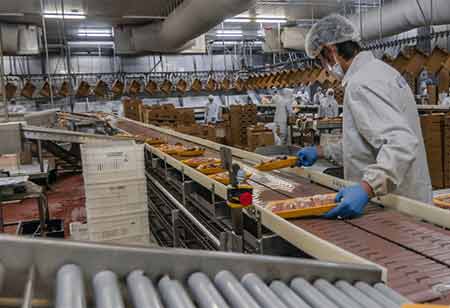Thank you for Subscribing to Food Business Review Weekly Brief
- Home
- Topics
- Alternative Proteins and Plant Based Food
- Beer and Wine
- Canned Beverages
- Coffee And Tea
- Food and Beverage Consulting
- Food and Beverage Financial Service
- Food And Beverages Marketing
- Food Distributors
- Food Ingredients
- Food Sustainability
- Plant Based Food and Beverages
- Seafood Suppliers
- Supplement Manufacturing
- Wine Investment
- News
- Vendor Viewpoint
- CXO Insights
- Conferences
- Newsletter
- CXO Awards
-
How Can We Conquer The Adverse Effects Of Ec On Food Safety?
EC (Environmental changes ) that we see today are dangerous to the food industry. The incidence of foodborne infections is quite increasing and impacts direct or indirect changes in the environment.

By
Food Business Review | Wednesday, February 02, 2022
Stay ahead of the industry with exclusive feature stories on the top companies, expert insights and the latest news delivered straight to your inbox. Subscribe today.

EC can explicitly or implicitly impact food safety and must be adequately addressed by adopting suitable approaches.
Fremont, CA: EC (Environmental changes ) that we see today are dangerous to the food industry. The incidence of foodborne infections is quite increasing and impacts direct or indirect changes in the environment. Few, rainfall contaminated with chemicals and biological wastes can contaminate food.
Flooding can rise unsafe food due to improper sanitation, storing, and cooking because of the lack of facilities. Additionally, it can contaminate agricultural oil, water, and other products with industrial waste and human sewage. Even the temperature changes can generate intense results such that the high temperature is favorable for the survival, growth, and mode of transmission of parasitic, bacterial, and viral infections.
From the examples mentioned earlier, it is evident that EC will create more food safety challenges. Reversing EC is impossible; still, its impact on food safety can be mitigated. Here are some approaches that developing countries can embrace to overcome the adverse effects of EC.
• Developing countries should comprehend the negative impacts of EC to prepare themselves to manage the outcomes via developing stricter food protection guidelines, requirements, and new interventions.
• All related sectors such as health, environment, agriculture, and veterinary health services should collaborate to prevent, detect, and control the rising foodborne risks connected with EC.
• Following any EC incidents or natural disasters, effective
inspection systems should be fixed to decrease the risk and make sure the proper disposal of contaminated foods.
• International food safety & public health organizations should cooperate in dealing with meal protection concerns related to EC through growing effective food safety plans like emergency meals safety preparedness and response.
• Apply effective food safety risk communication during natural disasters.
• Develop effective monitoring and surveillance programs where high-quality data can be collected to develop predictive modeling to respond to food safety risks rapidly.
• Use novel technologies like X-rays, filtration devices, and others to detect and control foodborne diseases.
• Utilize applied and cutting-edge technologies to clear up real problems.






